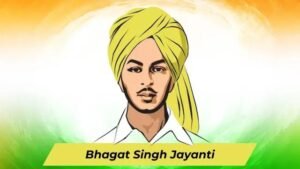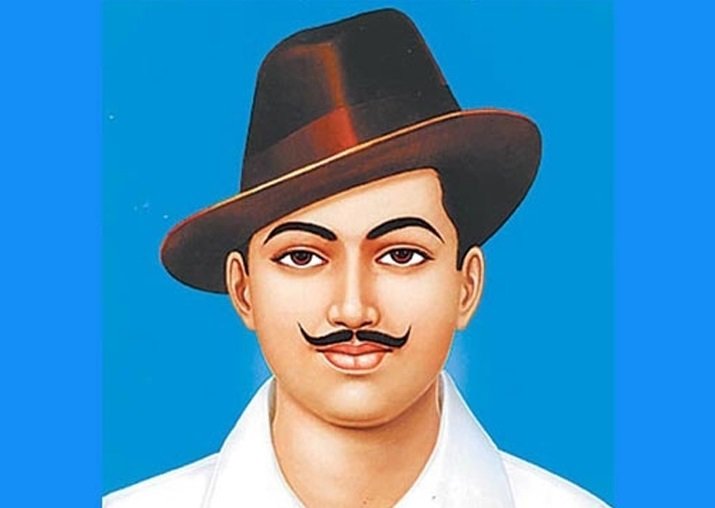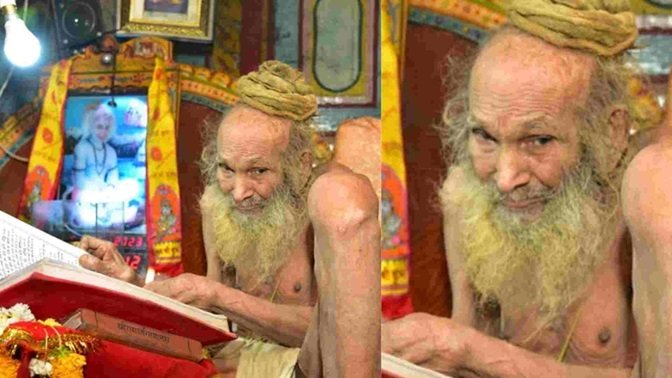Introduction
Bhagat Singh Age, a prominent figure in India’s struggle for independence, is remembered for his bravery, patriotism, and sacrifice. His life and death continue to inspire generations. In this article, we will delve into his biography, family background, education, achievements, and the significance of his martyrdom.
Biography
| Category | Details |
|---|---|
| Full Name | Bhagat Singh |
| Born | September 28, 1907 |
| Place of Birth | Banga, Punjab (now in Pakistan) |
| Died | March 23, 1931 |
| Age at Death | 23 years old |
| Cause of Death | Execution by hanging |
| Family | Father: Kishan Singh Sandhu, Mother: Vidyavati Kaur, Siblings: Two sisters |
| Education | National College, Lahore, and various self-studies in philosophy, politics, and history |
| Notable Actions | Assassination of John Saunders, Bombing of the Central Legislative Assembly, and revolutionary activities |
| Famous Quotes | “Inquilab Zindabad” (Long live the revolution), “I am full of ambition and hope, and I wish to die a martyr for my country.” |
| Key Inspirations | Karl Marx, Lenin, Lala Lajpat Rai, and other revolutionaries |
| Legacy | Remembered as a martyr and national hero, symbol of sacrifice for India’s freedom |
| Awards | None during his lifetime, but considered a symbol of bravery and patriotism in India |
| Historical Impact | Played a crucial role in India’s independence movement, inspiring youth across the country |
Born on September 28, 1907, in Banga (now in Pakistan), Bhagat Singh became one of the most influential revolutionaries in India’s fight for freedom from British colonial rule. From a young age, he exhibited an intense sense of nationalism and a passion for the independence movement. His journey led him to make significant contributions to the cause, ultimately leading to his execution at the age of 23.
Family
| Family | Details |
|---|---|
| Father | Kishan Singh Sandhu |
| Mother | Vidyavati Kaur |
| Siblings | Bhagat Singh had two sisters: – Rani – His elder sister – Harbans Kaur – His younger sister |
| Uncle | Ajit Singh Sandhu, |
This table summarizes the family details clearly.
Bhagat Singh was born into a Sikh family with strong ties to the independence movement. His father, Kishan Singh Sandhu, was a freedom fighter who supported the Indian National Congress. Bhagat Singh’s family background played an important role in shaping his revolutionary beliefs and actions.
Education
| Education | Details |
|---|---|
| Early Education | Attended a local school in his hometown, Banga (now in Pakistan), focusing on basic subjects. |
| Secondary Education | Moved to Lahore and joined Dayanand Anglo-Vedic High School, where he developed an interest in politics and revolutionary ideas. |
| Higher Education | Enrolled in National College, Lahore, founded by Lala Lajpat Rai, where he studied history, literature, and philosophy, and was exposed to nationalist and socialist ideologies. |
| Self-Education | Bhagat Singh was largely self-educated, reading extensively on subjects like Marxism, socialism, revolution, and Indian history. He was influenced by Western thinkers such as Karl Marx and Lenin. |
Bhagat Singh’s educational journey played a significant role in shaping his revolutionary ideas and actions. Though his formal education was relatively brief, it was deeply impactful in broadening his horizons and fueling his passion for India’s independence. Here’s an in-depth look at his education:
1. Early Education

Bhagat Singh began his schooling in his hometown, Banga (now in Pakistan), where he attended a local school. His early education was typical of most children of his time, with a focus on basic subjects like mathematics, history, and literature. He was known to be an intelligent child, keen on learning and excelling in academics. However, his interest in history, politics, and revolutionary activities was growing at an early age, and it would soon shape the path of his education.
2. Shift to Lahore:
At the age of 13, Bhagat Singh moved to Lahore, where he joined the Dayanand Anglo-Vedic High School. This change was pivotal in his academic growth. It was in Lahore that he was introduced to the works of great Indian nationalists and revolutionaries. He became interested in reading books on political ideologies, history, and philosophy. Bhagat Singh’s exposure to literature on Indian freedom fighters like Lala Lajpat Rai and others helped him understand the importance of India’s independence struggle.
3. Influence of Revolutionary Ideas:
During his time in Lahore, Bhagat Singh developed a fascination with revolutionary ideas and radical political movements. His interest in the freedom struggle was further enhanced by his association with the Arya Samaj and its founder, Swami Dayanand Saraswati, whose ideas on social reform and nationalism greatly influenced Bhagat Singh. Bhagat Singh’s education wasn’t confined to books; he learned from the various debates, lectures, and discussions he attended.
4. Higher Education at National College, Lahore:
Bhagat Singh enrolled in the National College in Lahore, founded by Lala Lajpat Rai, to continue his studies in the subjects of history, literature, and philosophy. It was at this institution that his education took a more focused direction. National College was a center for nationalistic education, where Bhagat Singh and other like-minded young men were exposed to ideologies of freedom, socialism, and revolution. He was particularly influenced by Marxist and socialist thinkers, as well as the works of Lenin and Trotsky. Bhagat Singh was also deeply inspired by European revolutionary ideas and movements.
5. Self-Education:
Bhagat Singh’s real education came from his love for reading. Apart from his formal schooling, he was largely self-educated. He read extensively on a wide range of topics, including Western philosophy, political theory, and Indian history. Books by authors such as Karl Marx, Friedrich Engels, and Lenin shaped his understanding of class struggle, revolution, and socialism. He was also influenced by thinkers like Bhagat Singh’s uncle, who introduced him to radical nationalist literature.
6. Short-lived Formal Education:
Bhagat Singh Age ’s formal education came to an abrupt halt after he left school at the age of 16, but he continued to pursue learning in a more informal setting. His education remained a mix of self-study and practical experience. He got involved in political activities, including the formation of the Naujawan Bharat Sabha (a youth wing of the Indian National Congress), which aimed to promote revolutionary ideals among young people. His activities in the movement took precedence over his studies, but he never stopped learning.
7. Legacy of Education in Revolution:
Although Bhagat Singh did not pursue a conventional degree, his educational journey was central to his revolutionary life. He gained an in-depth understanding of social, economic, and political issues through his readings and interactions with other revolutionaries. His education helped him develop the ideologies that would later guide his actions in the fight for India’s independence.
Bhagat Singh was an excellent student, known for his keen interest in literature, history, and politics. He completed his early schooling in his hometown and later moved to Lahore, where he attended the National College. His education, particularly his studies in revolutionary ideologies, deeply influenced his political stance and his involvement in the freedom struggle.
Stories of Success
Bhagat Singh’s success lay not in traditional achievements but in his commitment to the cause of India’s independence. His most notable actions include his involvement in the assassination of John Saunders, a British officer, in retaliation for the death of Lala Lajpat Rai, and his participation in the bombing of the Central Legislative Assembly to protest against repressive laws. Despite his youth, Bhagat Singh demonstrated exceptional courage and resolve in his mission.
Famous Quotes
- “Inquilab Zindabad” (Long live the revolution)
- “I am full of ambition and hope and I wish to die a martyr for my country.”
- “The bombs are not intended to kill anyone. They are meant to make the deaf hear.”
Lessons Learned from Their Life
- Patriotism: Bhagat Singh’s dedication to the independence movement teaches the importance of selflessness and sacrifice for one’s country.
- Courage and Fearlessness: His bravery, even in the face of death, serves as a reminder to stand up for what is right.
- Education as Empowerment: Bhagat Singh’s thirst for knowledge exemplifies how education can shape one’s worldview and inspire meaningful change.
Turning Points in Life
- The death of Lala Lajpat Rai in 1928, which prompted Bhagat Singh to take drastic actions against the British authorities, was a pivotal moment in his life.
- The trial and subsequent execution of Bhagat Singh, Rajguru, and Sukhdev on March 23, 1931, marked a turning point in India’s independence movement, galvanizing the youth to join the fight against British rule.
Inspirations
Bhagat Singh drew inspiration from various figures, including revolutionary leaders like Marx, Lenin, and other freedom fighters. His vision was not limited to the struggle against British rule but extended to the establishment of a just and equitable society.
Hobbies
Bhagat Singh was deeply involved in reading books on philosophy, history, and political ideologies. He also had an interest in writing and often penned his thoughts on revolution and freedom.
Vision for the Future
Bhagat Singh envisioned an independent India where equality, justice, and freedom would prevail for all citizens, regardless of caste, religion, or creed. His vision extended beyond just gaining independence from British colonial rule; it was about building a society where the common people could live with dignity.
Awards
Though Bhagat Singh did not receive any awards during his lifetime, he remains a symbol of patriotism, courage, and sacrifice in India. His legacy has been celebrated in numerous books, films, and memorials.
Conclusion: Bhagat Singh Age
Bhagat Singh’s death at a young age was a tragic but defining moment in India’s fight for independence. His life and actions continue to inspire millions, serving as a reminder of the sacrifices made by individuals in the pursuit of freedom and justice.
FAQ: Bhagat Singh Age
- How old was Bhagat Singh when he died?
Bhagat Singh was 23 years old when he was executed on March 23, 1931.
- Why did Bhagat Singh take such extreme actions?
Bhagat Singh was motivated by a deep desire for India’s independence and the injustice inflicted by British rule. His actions were meant to inspire the youth and bring attention to the oppression of Indians under British rule.
- Is Bhagat Singh considered a martyr?
Yes, Bhagat Singh is considered a martyr who sacrificed his life for the cause of India’s independence.
- What were Bhagat Singh’s last words?
Bhagat Singh’s last words were “Down with imperialism” and “Long live the revolution.”
Disclaimer
This article is intended to provide general information about Bhagat Singh’s life and legacy. Any factual inaccuracies are unintentional and should be addressed accordingly.



